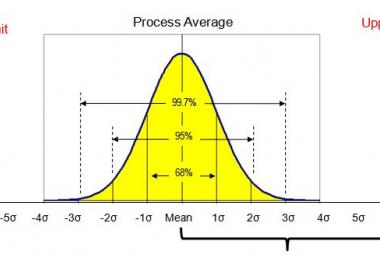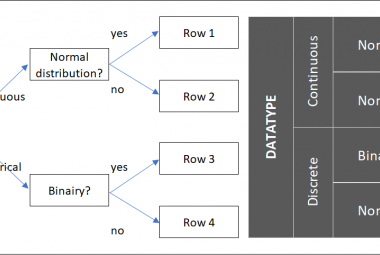In his book Office Kaizen, William Lareau describes a lean model which helps eliminating waste in an office environment. For me, the most interesting part of the book describes the different types of waste Lareau describes, the non-value adding activities that prevent flow. Lareau defined this list of wastes, because many people find it difficult to translate the traditional 8 wastes to their office environment.
In this article, I will describe 9 different types of office waste for which all employees can are responsible and four types of waste that result from a lack of leadership, for which responsibility lies more with management.
We will start with the first group of wastes, of which I describe three of the categories Lareau describes: human waste, process waste and information waste.
The category HUMAN WASTE includes wastes that prevent people from using their full potential. This category includes goal alignment waste, task waste and waiting.
Goal alignment waste describes the productivity that is lost due to people working on different goals that collide with each other. In the worst case, different teams even cancel out each other’s improvements, because they have different KPI.
Task waste is the waste of productivity due to time spend on tasks that are unnecessary or misplaced, which leads to a team not meeting its targets.
Waiting (actually one of the original 8 wastes, (Ohno, 1988)) is the third type of human waste and includes waiting for colleagues in meetings, waiting for information from another person or department or for software to process information on your computer.
The category PROCESS WASTES include wastes that arise due to the mistakes in the process design, or the fact that people are not sticking to the standard processes.
Waste of control is the first type of waste in this category, which describes managers checking up on their team members to see if they still follow the process, without contributing to improvement activities of that process.
Standardization waste exists, when extra resources are consumed because not everybody is working according to the documented standard. The current most efficient way of working needs to be documented and shared among team members to prevent this waste.
Work around waste is the waste that exists when processes are designed so poorly, that employees spend their time firefighting problems that occur due to the design. If the problems are not solved preventatively, this behavior leads to people following unofficial processes next to the official process, just to get their job done.
The third category describes INFORMATION WASTE, and includes all time that is wasted due to people searching for, checking and correcting information.
Missing information waste exists when people have to call or write other colleague to ask for information and wait for the other to respond and send the information that is needed.
Irrelevant information waste exists when people spend their time collecting and documenting information that is not value adding for the (internal) customer.
Inaccurate information waste (defects) exists when people have to spend time correcting information that was created in the previous process steps (re-work).
Next to the wastes described above, Lareau describes at least another four types of waste that result from a lack of leadership: waste due to lack of focus, a lack of structure, discipline or ownership.
A LACK OF FOCUS is linked to the previously described goal alignment waste. When we want an entire organization to participate in continuous improvement activities, we need to give them the same goals and objectives. Lareau describes a few statements that can help you find out whether your team members have the required focus:
- I am familiar with my organization´s goals and I know what objectives the organization needs to achieve to achieve the goals.
- I know how my team can contribute to the company goals.
- My team’s goals are easy to understand, easy to measure, and can be influence by my team.
- In our team, we regularly receive feedback on how we are performing as a team and as an organization, in relation to our company goals.
Structure is defined as the context documented by standard work that facilitates the business in its daily activities. A LACK OF STRUCTURE within the lean context, means that there are no documented processes that facilitate daily improvement. The following statements can help you find whether you have the right structures in place to drive continuous improvement:
- I measure my performance on a daily basis.
- My team has a 10 minute daily meeting in which problems are discussed and changes in the organization are shared with us, so we can respond to them quickly.
- My team has a plan in place to improve our performance in small steps.
- Managers regularly take part of the meetings and share why certain decisions were made with us, using understandable language.
A LACK OF DISCIPLINE has to do with everybody knowing what is expected of him or her. The lack of discipline leads to people not keeping their commitments or standards as they were discussed and documented. The following statements can help to find the level or discipline your team has:
- When there is a problem in my team, it is discussed in the daily meeting and a corrective action to solve the problem is defined and implemented fast.
- Team members appreciate feedback and improvement ideas from colleagues in and outside the team.
- I trust the management is doing its best to reduce cross functional boundaries, so that we can further improve our productivity.
- It seldom occurs in our team that we do not stick to the due date we committed to in a previous daily meeting.
Focus, structure and discipline will help employees with their daily business, but without a sense of ownership among employees – feeling responsible for your work and results – these three are useless. Put differently: a LACK OF OWNERSHIP can lead to people being less disciplined, ignoring processes and loosing focus. The following questions can help you establish whether you have a team with ownership:
- I feel that my team performance reflects my personal performance
- I feel comfortable to address problems with my team members and managers
- In our team, we are proud of our achievements and we measure our improvement
- I am convinced that in my team, we incrementally improve ourselves on a daily basis.
All the described wastes above can be reduced by building a clear lean structure. Lareau describes a very complex lean model that includes all four of the tools that I included in my lean house for the shop floor: 6S, standard work, team boards & the daily management structure and kaizen.
This means, that even though the wastes in an office environment described above seem to be a little different from the production environment, the same lean structure can help you to reduce those wastes and improve the productivity of your team!
Continue to:
Creating Mixed Model Value Streams - K.J.Duggan (summary)
REFERENCE:
Lareau, W. (2003). Office Kaizen - Transforming Office Operations Into Strategic Competitive Advantage. Milwaukee: ASQ Quality Press. (order this book)












